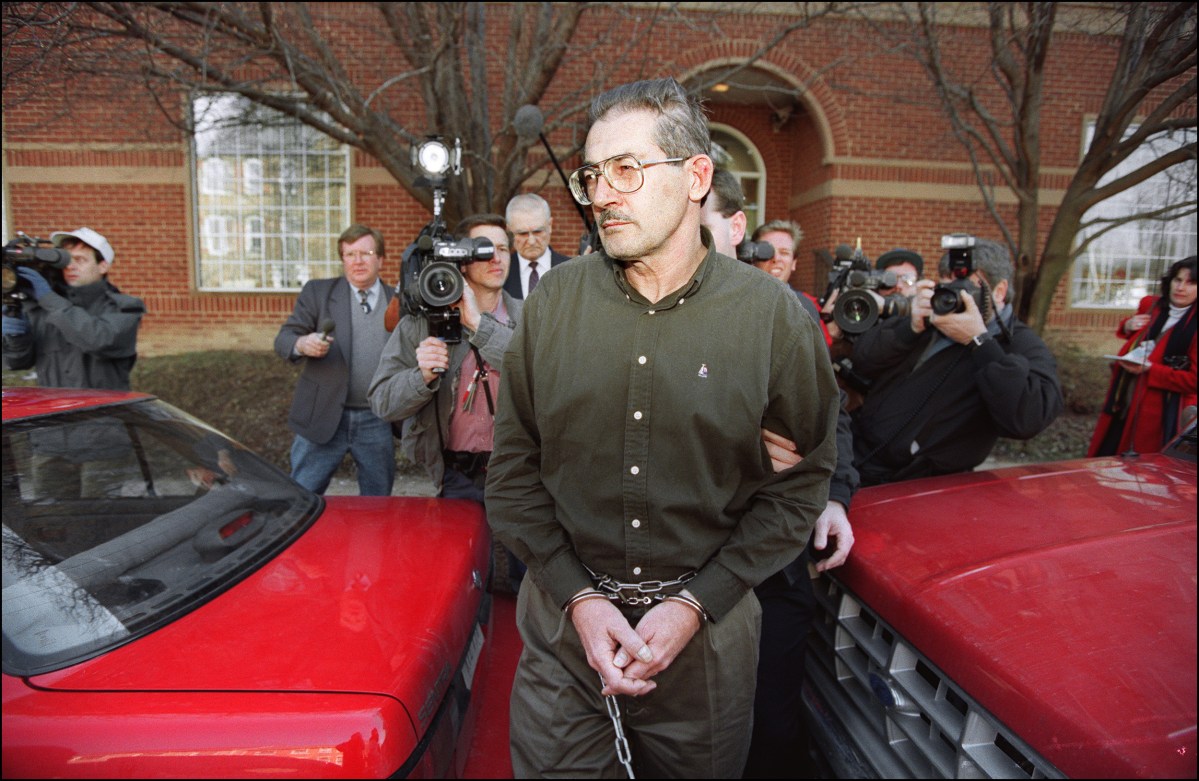In the photo, he’s wearing a dark jacket and coat. One law enforcement officer has him by one hand, pulling it behind the man’s back so he can apply handcuffs.
Other FBI agents stand around, casually, but with their hands on their hips not far from their guns.
Aldrich Ames, the man being arrested, looks at one of the agents and though the photo is blurry, you can still make out some surprise.
Ames, one of the greatest traitors in American history, was arrested on Feb. 21, 1994, nearly a decade after he began selling secret information to the Soviet Union.
Ames had joined the CIA in 1962 first as a low-level staffer before working his way up to a case officer in 1969. But by the early 1980s Ames went through a divorce and got involved with a girlfriend with expensive tastes.
On April 16, 1985, Ames was in Washington, D.C. and made his way into the Soviet Embassy where he offered secrets for cash, a CIA history says.
“At the time Ames was working in the CIA’s Soviet/East Europe Division. He was extremely knowledgeable about the Soviet intelligence service and had access to all cases of – and plans for – CIA penetration of the KGB and Soviet military intelligence,” the history says.
By the summer, Ames was meeting regularly with a Soviet handler. He got CIA permission for the meetings, claiming he was trying to recruit the handler.
By the next year CIA operations were failing and recruited agents were being caught at an alarming pace. The CIA realized it had a serious problem. But they didn’t know what the problem was – maybe a communication system was compromised, or maybe it was something worse.
That year the CIA put a small team together to figure it out. After five years, and joined by specialists from the FBI, the team decided to narrow its focus to a mole within the CIA.
They started with a list of 190 CIA officers who they thought had access to the secrets that the Soviets kept getting their hands on.
“We knew which people had the best access,” one of the CIA officers assigned to the task, Jeanne Vertefeuille, later said.
Through a process of elimination, they narrowed the list down to 28 possible traitors. But the team already thought they knew where their investigation was going.
“Everybody involved with the investigation was allowed to vote for six people and the votes were weighted,” Vertefeuille said. “The person who caused you the greatest amount of unease would be No. 1 on your list. Lo and behold, [Aldrich] Ames comes out at the top of the combined and weighted list.”
The real break in the case, however, came in 1992, when another CIA officer, Sandy Grimes, realized that Ames had been consistently making large cash deposits after his approved meetings with Soviet officials.
“To Sandy this was an epiphany,” said a book later co-written by Grimes and Vertefeuille. “She told us what she found, then sped to [another investigator] to fill him in. Her excited announcement to him was: ‘It doesn’t take a rocket scientist to tell what is going on here. Rick is a goddamn Russian spy.’”
The next year the FBI took over the case and for 10 months conducted “intensive physical and electronic surveillance” of the man as he worked in D.C.
In October 1993 the FBI says its agents discovered a chalk mark on a mailbox – a message, they said, telling his Soviet handlers that he would meet with them during an upcoming trip to Bogota, Colombia. The FBI tailed him there, where they surveilled him and his Russian handler.
When he returned to Washington the FBI decided to move in. Ames had been planning another trip to Moscow and they feared that if Ames realized they were closing in, he could disappear behind the Iron Curtain forever.
The photo described above, posted on the FBI’s website, shows the moment Ames’ betrayal finally ended. The CIA estimates that Ames gave up information that compromised “at least 100 operations and endangered the lives of dozens of Soviet agents [working for the U.S.].”
Ames was paid more than $2 million and another $2.1 million awaited him in a Moscow bank account – money he’d never see.
After a lengthy debriefing, during which time Ames detailed all the names he gave up and even told one of the CIA officers how he had planned to frame her, Ames pleaded guilty to espionage charges.
In a post-pleading interview with The Washington Post, Ames said the Soviets warned him that money would be his downfall.
The Soviets “agonized over every nickel they handed out, pleading and repeating and reiterating: ‘Be careful, be careful. This is the way that people get caught,’” Ames said.
He was sentenced to life in prison. Outside the prison, he’s known as one of the most notorious traitors in American history.
Inside the prison system, he’s inmate 40087-083.
This article was featured in the InsideHook newsletter. Sign up now.
























